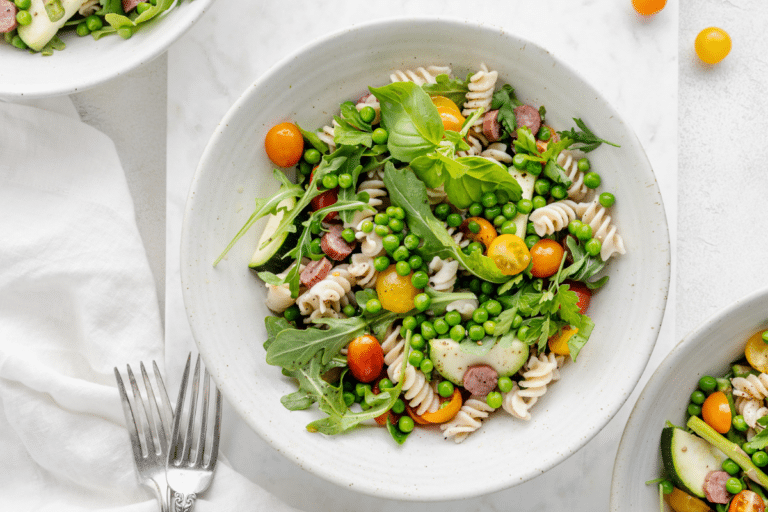DIY Indoor Vegetable Garden: A Step-by-Step Guide to Fresh Vegetable at Your Fingertips
Lately, indoor vegetable gardens are all the rage. Perfect for gardening buffs and health-conscious folks dealing with tight outdoor space or unpredictable weather.
Ready for your own DIY indoor vegetable garden?
This guide’s got you covered, making fresh, homegrown produce a reality at your fingertips.
Let’s dive in!
Why Indoor Vegetable Gardening?
Before we dive into the nitty-gritty of setting up your indoor vegetable garden, let’s talk perks.
Understanding the benefits of growing your vegetables indoors is key.
Ready? Let’s roll!
Year-Round Growing:
Unlike traditional outdoor gardening, indoor vegetable gardens allow you to grow your favourite vegetables throughout the year, regardless of the season or climate. This means a constant supply of fresh produce right at your disposal.
Controlled Environment:
Indoor gardening provides you with full control over environmental factors such as temperature, humidity, and lighting. This control enables you to create optimal plant conditions, resulting in healthier and more productive crops.
Space Efficiency:
Whether you live in a small apartment or a house with limited outdoor space, indoor gardening allows you to make the most of the space available. Vertical gardening, hanging planters, and compact containers make it possible to grow a variety of vegetables even in confined spaces.
Pesticide-Free Produce:
When you grow your vegetables indoors, you have the power to choose organic and pesticide-free methods. This not only ensures the health of your plants but also guarantees the safety and nutritional value of the vegetables you consume.
Now, let’s dive into the step-by-step guide to help you set up your DIY indoor vegetable garden.
Step 1: Choose the Right Location
Selecting the right location for your indoor vegetable garden is crucial for the success of your plants. Consider the following factors when choosing a spot:
Sunlight Exposure:
Place your indoor garden in a location that receives ample sunlight. South-facing windows are ideal for most vegetables, as they provide maximum sunlight throughout the day.
Temperature Control:
Ensure that the chosen space maintains a consistent temperature. Most vegetables thrive in temperatures between 60-75°F (15-24°C). Avoid placing your garden near drafts, radiators, or air conditioning vents.
Accessibility:
Find a spot that’s a breeze to get to when it’s time to water, prune, or harvest. It just makes keeping up with your indoor garden way more doable.
Step 2: Gather the Necessary Supplies
To start your indoor vegetable garden, you’ll need some basic supplies. Here’s a list to get you started:
Containers or Pots:
Select containers with drainage holes to prevent overwatering. Ensure they are appropriate in size for the specific vegetables you plan to grow.
Potting Mix:
Go for a really good potting mix that lets your plants breathe and drains well. Skip the garden soil—it can get all squished up in containers.
Seeds or Seedlings:
Choose vegetables that are suitable for indoor cultivation. Some great options include cherry tomatoes, herbs (such as basil and mint), lettuce, and peppers.
Grow Lights:
If your chosen spot is a bit sun-deprived, toss in some LED grow lights. They’re energy-efficient and give your plants all the light they need to thrive. Easy upgrade!
Watering Can:
Use a watering can with a narrow spout to provide a controlled flow of water to your plants.
Fertilizer:
Select a balanced, water-soluble fertilizer suitable for vegetables. Follow the recommended application rates on the packaging.
Step 3: Choose the Right Vegetables
Not every veggie is cut out for indoor gardening. Go for the compact, container-friendly types with short growing seasons. Here are some stellar picks for your indoor vegetable garden:
Herbs:
Basil, mint, parsley, chives, and cilantro are herbs that thrive in indoor environments.
Leafy Greens:
Lettuce, spinach, kale, and Swiss chard are excellent choices for indoor cultivation.
Tomatoes:
Compact tomato varieties, such as cherry or patio tomatoes, can be grown successfully in containers.
Peppers:
Bell peppers and chilli peppers can be grown indoors, provided they receive sufficient sunlight.
Step 4: Planting Your Vegetables
Now that you have your supplies and chosen vegetables, it’s time to get your hands dirty. Follow these general steps for planting your indoor garden:
Fill Containers with Potting Mix:
Fill your containers with the chosen potting mix, leaving about an inch from the top to allow for watering.
Plant Seeds or Seedlings:
Follow the recommended planting depth and spacing for your chosen vegetables. If using seedlings, transplant them carefully into the containers.
Watering:
Water the soil thoroughly after planting. Ensure that excess water can drain out of the containers.
Label Your Plants:
Keep track of what you’ve planted by labelling each container. This will help you monitor their growth and identify any issues.
Step 5: Provide Adequate Lighting
While natural sunlight is top-notch for plants, it might not cut it, especially in winter or low-light areas. Enter grow lights – they’re a must. Check out these tips for giving your indoor garden the light it needs:
Choose the Right Grow Lights:
LED grow lights are energy-efficient and emit the full spectrum of light necessary for plant growth. Position the lights so they are a few inches above the plants.
Adjust Light Duration:
Most vegetables require 12-16 hours of light per day. Use a timer to ensure consistent light exposure and mimic natural daylight cycles.
Monitor Light Intensity:
Pay attention to the intensity of the light. Adjust the height of the grow lights as needed to prevent plants from getting too leggy or too close to the light source.
Step 6: Watering and Humidity
Crucial: nail the watering game for your indoor vegetable garden. Check out these guidelines to keep your plants happy and hydrated:
Check Soil Moisture:
Just get your finger into the soil and see how it feels. When the top inch is all dry, that’s the cue to give your plants a drink!
Avoid Overwatering:
Always go for pots with drainage holes, and don’t let your plants hang out in standing water. Too much water can be a real hassle, causing things like root rot and other issues.
Maintain Humidity:
Veggies usually thrive with humidity levels between 40-60%. If the air in your home is too dry, you might want to consider using a humidifier or just placing a water tray near your plants.
Step 7: Fertilizing
Indoor plants rely on you for their nutrients, as they cannot access the soil’s natural nutrients like outdoor plants. Follow these guidelines for fertilizing your indoor vegetable garden:
Choose a Balanced Fertilizer:
Select a fertilizer with a balanced ratio of nitrogen, phosphorus, and potassium. A general-purpose, water-soluble fertilizer works well.
Follow Application Recommendations:
Read the fertilizer’s instructions and apply it at the recommended rate. Avoid over-fertilizing, as it can harm your plants.
Fertilize Regularly:
Fertilize your indoor vegetables every 2-4 weeks, depending on the specific needs of the plants.
Step 8: Pruning and Maintenance
Maintaining your indoor vegetable haven is key to health and productivity. Stick to these steps for the right pruning and upkeep:
Pruning:
Pinch off the tips of herbs to encourage bushier growth. Remove any yellow or damaged leaves to redirect the plant’s energy towards healthier parts.
Supporting Plants:
Provide support for tall or heavy plants, such as tomatoes or peppers, using stakes or cages. This prevents the plants from toppling over as they grow.
Pest Control:
Keep an eye on those sneaky pests like aphids or spider mites. If you spot them, don’t wait around—hit them with some insecticidal soap or neem oil ASAP!
Rotate Plants:
Rotate your containers regularly to ensure all sides of the plants receive adequate light. This prevents uneven growth and ensures healthier plants.
Step 9: Harvesting Your Homegrown Vegetables
The joy of harvesting your homegrown vegetables is one of the most rewarding aspects of indoor gardening. Follow these guidelines for a bountiful harvest:
Harvest Timely:
Harvest vegetables when they reach the desired size and colour. Regular harvesting encourages continuous production.
Use Clean Tools:
Use clean and sharp scissors or pruning shears to harvest your vegetables. This reduces the risk of damaging the plants.
Harvesting Herbs:
Harvest herbs frequently to encourage new growth. Avoid removing more than one-third of the plant at a time.
Enjoy Fresh Produce:
Immediately enjoy the fruits of your labour by incorporating your freshly harvested vegetables into meals, salads, and snacks.
Conclusion
Building your indoor vegetable garden is not just rewarding, but it’s a sustainable way to enjoy fresh produce all year. Get the right spot, and the necessary supplies, and show consistent care – and boom, you’ve got a thriving garden right at your fingertips.
Whether you’re a seasoned pro or a newbie, the satisfaction of nurturing your plants and savouring the literal fruits of your labour is unmatched. Start your indoor vegetable garden today and step into a world of homegrown goodness and healthy living.


